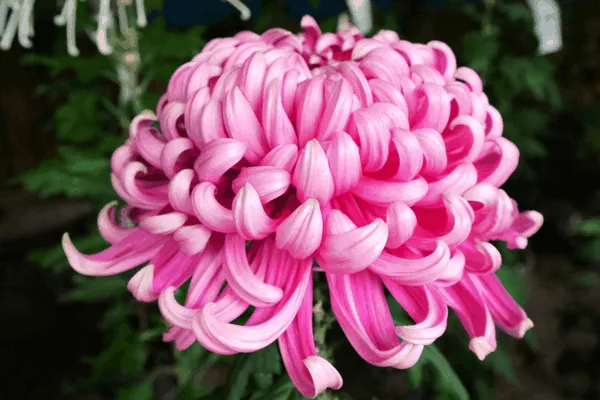Gardening can be a therapeutic and rewarding hobby, but for beginners, it’s essential to start with plants that are easy to grow and maintain. Flower seeds are a popular choice for novice gardeners due to their simplicity and the beauty they bring to outdoor spaces. In this article, we will explore the easiest flower seeds to grow, along with choosing the right seeds, preparing your garden, and nurturing your budding blooms.
Selecting the Right Flower Seeds
1. Annual vs. Perennial: Understanding the Difference
Before delving into specific flower varieties, it’s crucial to grasp the distinction between annual and perennial flowers. Annuals complete their life cycle in one growing season, while perennials return year after year. For beginners, annuals often offer a quicker and more forgiving experience, as they don’t require long-term commitment.
2. Native vs. Non-Native Species
Consider choosing native flowers for your region. Native species are adapted to the local climate and soil conditions, making them more likely to thrive. Non-native species may require extra care and resources, making them less suitable for beginners.
Easy-to-Grow Flower Varieties
Now, let’s dive into some of the easiest flower seeds to grow:
1. Marigolds (Tagetes)
Marigolds are a beloved choice for novice gardeners. They come in various vibrant colors and are remarkably resilient. These annual flowers are well-suited for both garden beds and containers. Marigolds are known for their ability to deter pests, making them a valuable addition to any garden.
2. Zinnias (Zinnia Elegans)
Zinnias are another excellent choice for beginners. These colorful annuals thrive in full sun and are incredibly low-maintenance. Zinnias produce a profusion of blooms that attract pollinators, adding life and color to your garden.
3. Sunflowers (Helianthus annuus)
Sunflowers are iconic for their cheerful and towering presence. They are easy to grow from seed and thrive in sunny locations. Sunflowers not only brighten up your garden but also provide seeds that attract birds, making them a delightful addition to any landscape.
4. Cosmos (Cosmos Bipinnatus)
Cosmos are delicate and dainty annual flowers that are perfect for beginners. They tolerate various soil types and are quite drought-resistant once established. Their feathery foliage and vibrant blossoms make them a charming addition to any garden.
5. Nasturtiums (Tropaeolum majus)
Nasturtiums are versatile and edible flowers that thrive in poor soil conditions. Their vibrant flowers are not only visually appealing but also add a peppery flavor to salads. Nasturtiums are perfect for gardeners looking to combine beauty with functionality.
Preparing Your Garden for Success
1. Choosing the Right Location
The success of your flower garden largely depends on choosing the right location. Most easy-to-grow flowers prefer full sun, which typically means at least six hours of direct sunlight daily. However, some varieties can tolerate partial shade, so consider your garden’s sun exposure when selecting your flower seeds.
2. Soil Preparation
Healthy soil is the foundation of a flourishing garden. Before planting your flower seeds, amend your soil with organic matter like compost to improve its fertility and water retention. Well-draining soil is essential to prevent waterlogged roots, which can lead to plant stress and disease.
3. Proper Spacing
When sowing flower seeds, follow the recommended spacing guidelines on the seed packets. Overcrowding can lead to competition for nutrients and hinder your flowers’ growth. Adequate spacing ensures that each plant has enough room to thrive.
4. Watering Wisely
Consistent and appropriate watering is crucial for your flowers’ success. Water your garden early in the morning to allow excess moisture to evaporate during the day, reducing the risk of fungal diseases. Be mindful not to overwater, as this can lead to root rot.
Nurturing Your Budding Blooms
1. Fertilizing
Most easy-to-grow flowers benefit from a balanced, all-purpose fertilizer. Follow the package instructions for application, typically every 4-6 weeks during the growing season. Avoid excessive fertilization, as this can lead to excessive foliage growth at the expense of blooms.
2. Deadheading
Deadheading, or the removal of spent flowers, encourages continuous blooming. This practice redirects the plant’s energy from seed production to new flower production. It also keeps your garden looking neat and attractive.
3. Pest and Disease Management
Regularly inspect your flowers for signs of pests or diseases. Early detection and intervention can prevent widespread damage. Consider using natural or organic pest control methods to minimize harm to beneficial insects.
4. Support and Staking
Tall or sprawling varieties may require support or staking to prevent them from flopping over. Use stakes or cages to keep your flowers upright and visually appealing.
Conclusion
Gardening with easy-to-grow flower seeds is an enjoyable and fulfilling endeavor for beginners. By selecting the right flower varieties, preparing your garden properly, and providing the necessary care, you can create a vibrant and beautiful garden space. Remember that gardening is a learning experience, so don’t be discouraged by any initial setbacks. With patience and dedication, your garden will flourish, bringing joy and beauty to your outdoor environment. Happy gardening!


